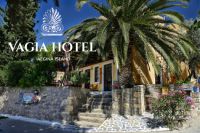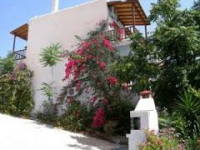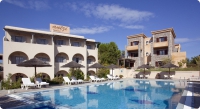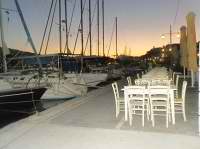The Archaeological Museum of Aegina is located at the archaeological site of Kolona, next to the ruins of the successive prehistoric settlements and the acropolis of historical times. The exhibits come mainly from the archaeological site of Kolona.
The equilateral stone building where the museum is housed consists of one story at the ground floor level, with a patio in the center. A wooden arcade surrounds the atrium and one external side of the building.
The current exhibit occupies the wing across from the entrance of the museum, which consists of three rooms. The collection covers the period from the prehistoric era to Roman times. In the left corner room there are two showcases with pre-historic ceramics (Neolithic to Mycenaean era). Large pithoi (jars) from the Early Helladic and Middle Helladic periods surround the showcases. Pottery from the geometric and archaic period is exhibited in the two showcases of the central room. The variety of pottery imports (Argos, Rhodes, Corinth, Attica) proves the intense commercial activity of Aeginetes in historical times, which is also discussed in ancient texts. In the same room, a series of sculptures represents the Aeginian plastic arts (7th-5th century BC).
Aegina was the headquarters of one of the most famous plastic arts schools in Archaic times. The sculptures of the pediments of the two archaic temples of Apollo, the two sphinxes of the sanctuary, and some reliefs (early dedicatory column - later archaic reliefs) exemplify its development. Most important is the inscription referring to the ancient temple of Aphaia. In the room in the right corner, fragments of the pediments of Aphaia are exhibited in two display cases. The showcases are framed by reliefs from holy mountains and a few Hellenistic and Roman works. Part of the Kapodistrian collection of reliefs (mainly from Rineia)--the contents of the first National Museum of Greece--is exhibited in the arcade of the atrium.
Source: Odysseus





